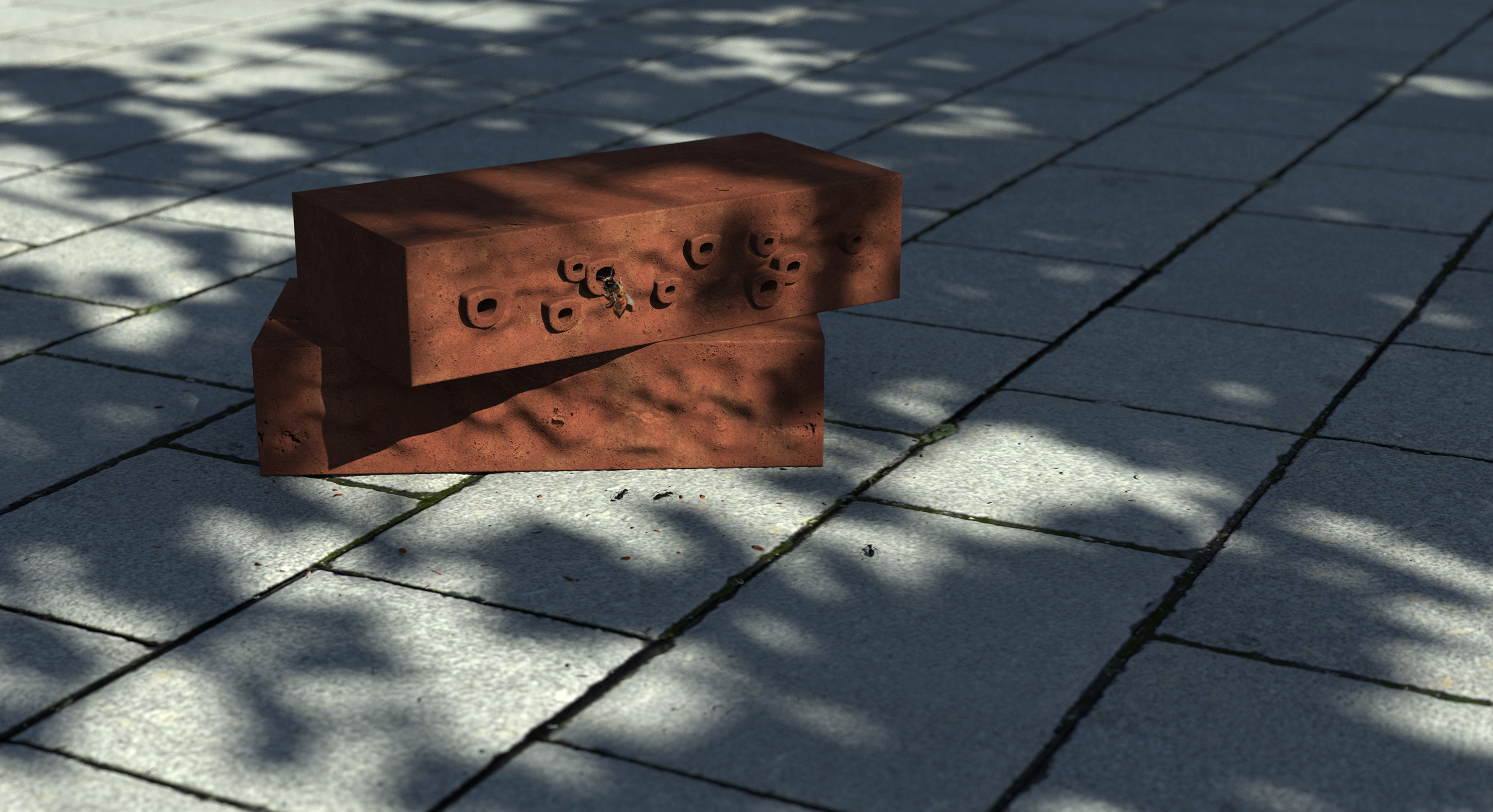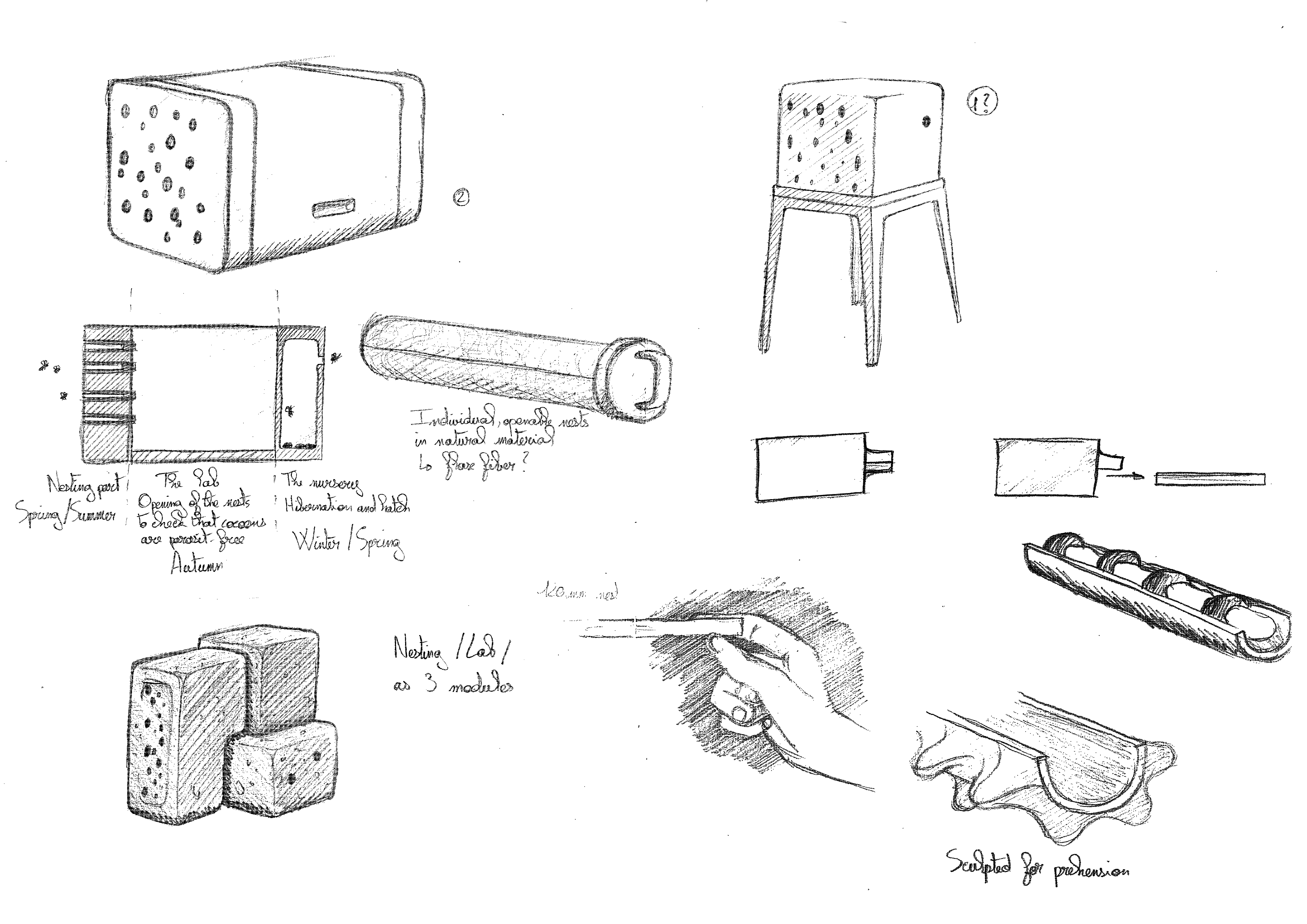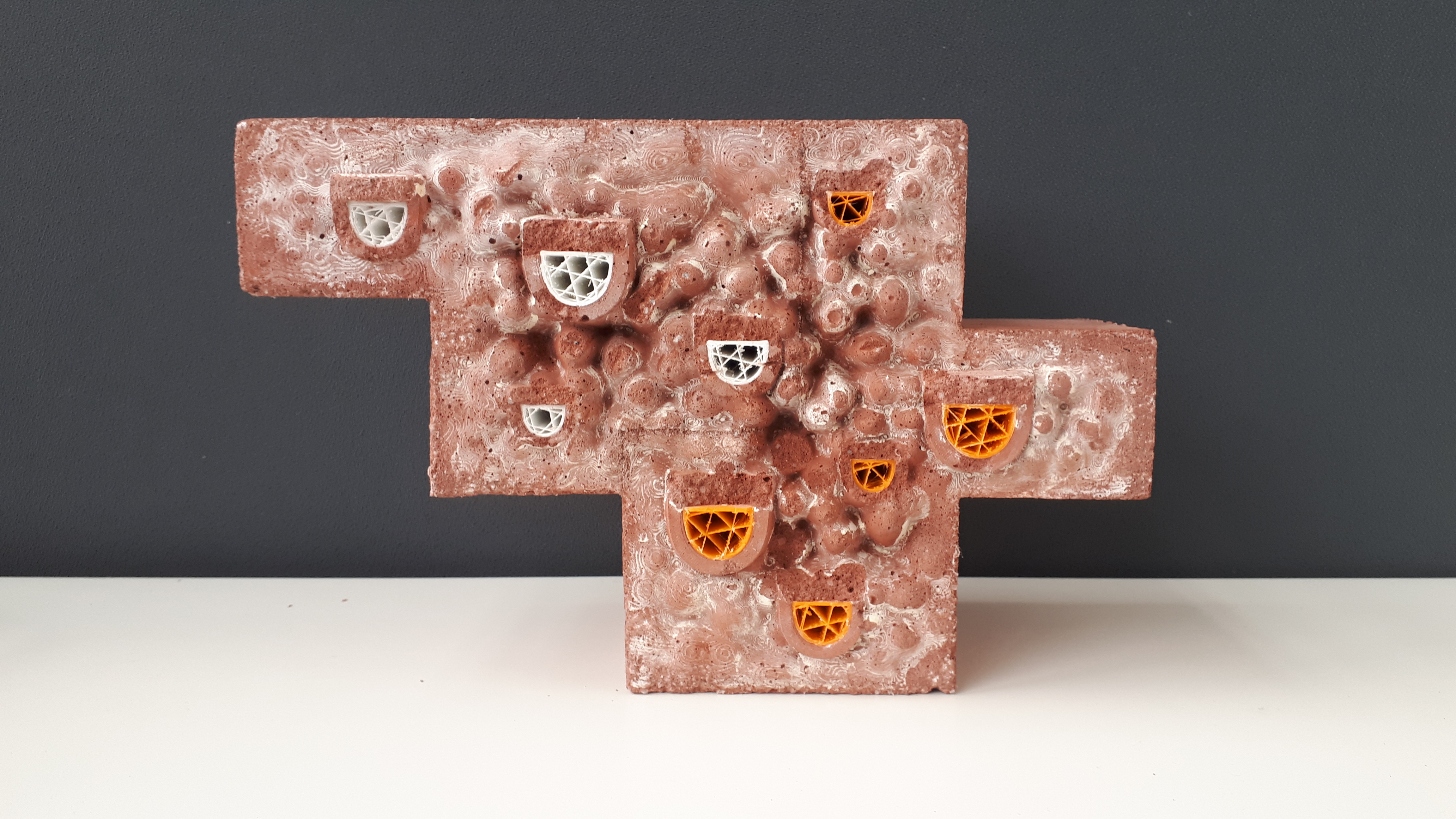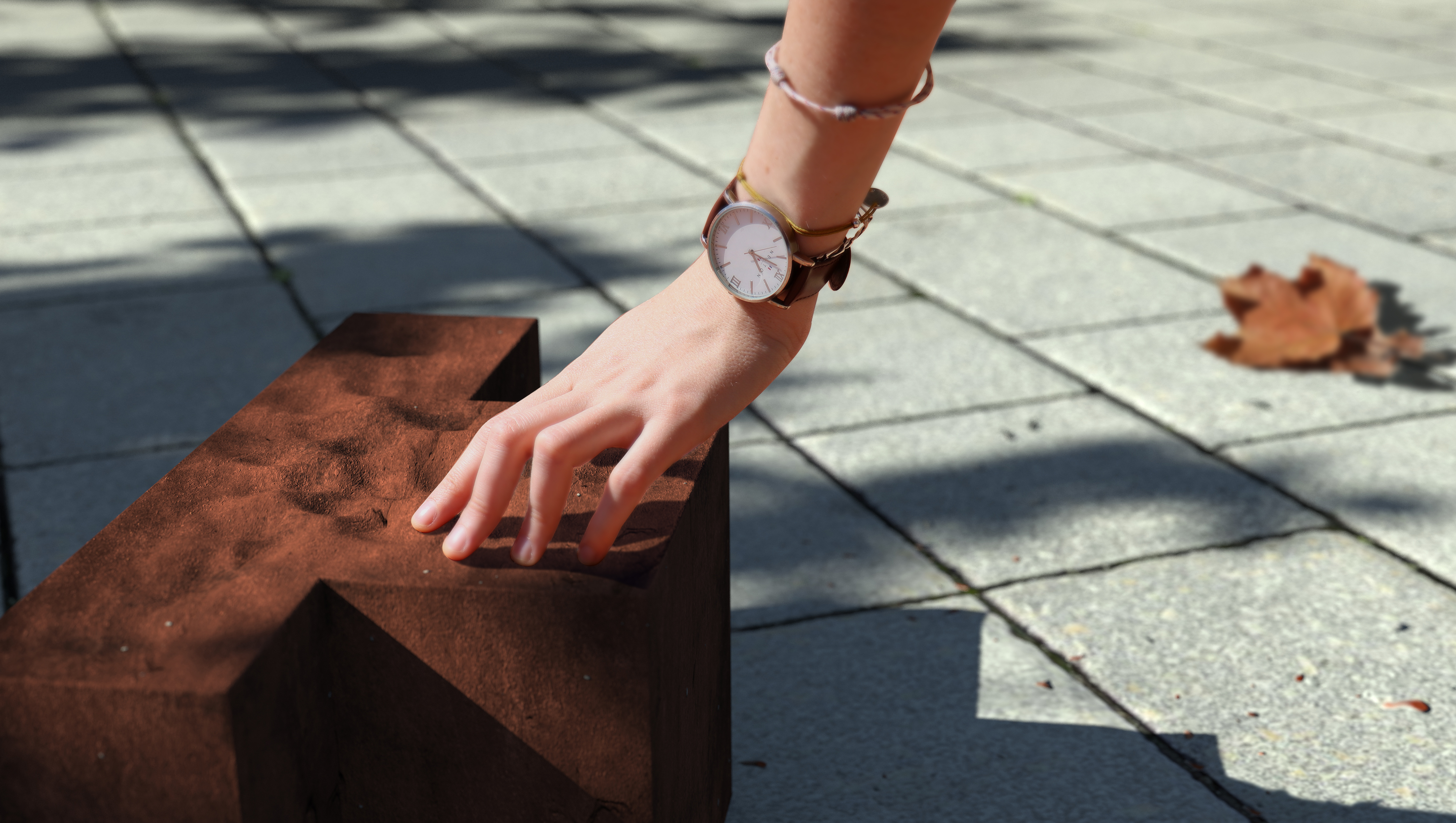Swarm
2017

Wild bees are often forgotten victims of human activities. Why not try to help by sharing housing with them?
Swarm takes advantage of an ubiquitous item of our cities, the brick, to start a conversation about wild bees, with two main objectives: to offer a way of mitigating the harmful effects of human activities on their inhabitat, and to educate people about the often overlooked topic of solitary pollinators.




Solitary bees observed by Ed Phillips
(courtesy of the photographer)
(courtesy of the photographer)
Bees and other pollinators are essential links within natural processes and the reproduction of plants. They represent a key enabler of the regeneration of ecosystems and therefore of the overall biodiversity; closer to our direct preoccupations, they are deemed to be responsible for around one third of our food supply.
Yet, as many other natural systems and agents, insects are in distress due to human activities: pesticides, monocultures, air pollution and electro-magnetic pollution are amongst the many causes of the plummeting of pollinators’ populations. Another, more peculiar reason of their struggle? The attention put on saving honey bees, a small but newsworthy group of bees, that tend to leave its wild cousins in the shadow.
Swarm originates in the will to raise public’s awareness about these forgotten bees, as well as in the need to take concrete actions to support the strengthening of their populations.

My first instinct was to develop a very modular solution that could be easily replicable to scale up the impact of the design.
Reflecting upon this emerging brief as well as on my immediate surroundings, here in Denmark, I came to envision the city itself as the base of the project: bricks are everywhere, and have been part of the Danish building culture since the 12th century - but not only here. In the United Kingdom, for instance, more than 2 billion bricks are produced yearly. So why not use at least a fraction of these to support natural systems, while re-inventing a design left unchanged for thousands of years? This is how Swarm first emerged as a building solution merging humans’ and bees’ shared need for shelter.
Reflecting upon this emerging brief as well as on my immediate surroundings, here in Denmark, I came to envision the city itself as the base of the project: bricks are everywhere, and have been part of the Danish building culture since the 12th century - but not only here. In the United Kingdom, for instance, more than 2 billion bricks are produced yearly. So why not use at least a fraction of these to support natural systems, while re-inventing a design left unchanged for thousands of years? This is how Swarm first emerged as a building solution merging humans’ and bees’ shared need for shelter.


Several ingredients compose Swarm’s identity: the desire to protect the bees, of course, and the need to raise awareness about their situation; the use of a 10.000 year-old craft, and the re-invention of an architectural classic to turn cities into biodiversity sanctuaries; an organic design that embraces and enhances these links both to nature and building tradition.
This last point was addressed through parametric modelling, which allowed to turn the flat surface of the traditional brick into an undulating, dynamic pattern, hinting at the presence of living creatures nesting at its core.
Successive iterations of modeling, prototyping and material exploration followed, on a quest to determine the optimal pattern and molding technique. These tests and some failures experienced along the way informed several redesigns. For instance, the overhanging nest shelter had to be shortened and rationalized after it proved very delicate to demold.
This last point was addressed through parametric modelling, which allowed to turn the flat surface of the traditional brick into an undulating, dynamic pattern, hinting at the presence of living creatures nesting at its core.
Successive iterations of modeling, prototyping and material exploration followed, on a quest to determine the optimal pattern and molding technique. These tests and some failures experienced along the way informed several redesigns. For instance, the overhanging nest shelter had to be shortened and rationalized after it proved very delicate to demold.






The result is a modern take on the brick, in line with recent architectural redesigns of this classic, merging novel aesthetic possibilities with the defense of a crucial cause. Following recent urban planning models putting natural spaces at the core of the built environment, Swarm helps make the transition between both even smoother and meaningful.




Since I first conceptualized and sketched the initial version of Swarm in 2017, and after successive modeling/prototyping, I kept refining its design in order to make the whole production process more viable. I also moved from a “single product” towards a system, making it easier for architects, planners, urbanists or landscapers to adopt this solution at the scale of buildings. I am currently still looking for the right partner to see this project take off.
Meanwhile, solitary bees are finally attracting more attention in the design sphere: in May 2020, Copenhagen-based studio Space10 launched BeeHome, an open source solution to provide bees with modular nesting blocks and enabling more people to play a role in helping protect bees.